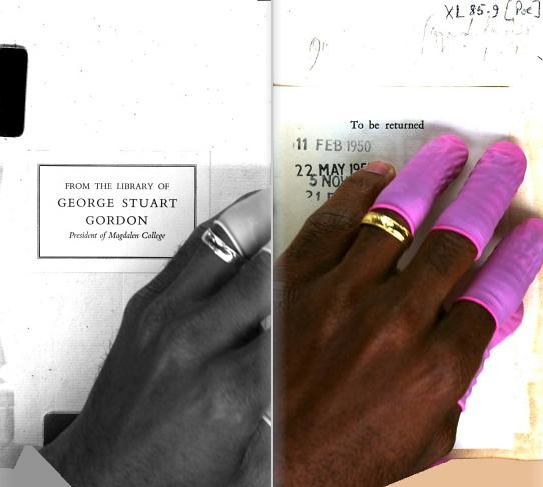I will bring together two parts of my research one in the form of a short piece of text and the other a short visual essay.
When creating a book I think it is easy to overlook the reader. To think of it merely as a receptacle in which you place your thoughts. But without the reader the book itself would not be activated, it would not be read. It would simply lie like sculpture observed but not entered. To pick up a book and hold it you enter a space, you are immediately placed in front of the book. You are there behind it as you hold the book in front of you. What happens then when you are made aware of this space through your interaction with the book?
I have been reading about the 'Fourth Wall'. Originating in theatre where the imaginary forth wall was the wall facing out to the audience. The first, second and third walls being the sides and back of the walls on stage. This forth wall is used in some plays to its advantage. Not only as a point for what is off the stage (the audience) to look in, but what is on stage to look out and acknowledge. Actors on stage speak directly to and acknowledge the audience in a technique called 'breaking the fourth wall'. This breaking of the fourth wall is a way of acknowledging the space that the audience in is a vital part of the play. Of course this also happens in cinema:
But it is literature that I am most interested in. As this singular experience you are having with the book suddenly becomes plural one. Where a conversation has been started. For example, In Miguel de Cervantes - Don Quixote: 'Idle reader: thou mayest believe me without any oath that I would this book, as it is the child of my brain...' and Charlotte Bronte's Jayne Eyre: 'Reader, I married him....'. You are placed somewhere by the book because it addresses you. The book is in front of you looking out. You form part of the story and part of the space in which it exists. Not only is the book about containing the story it is about you reading it. It is important that you are there.
________________________
This short visual essay forms a counterpoint to the research. Where the book addresses you, this is about people addressing books. Or at lest a mistaken snapshot into the process. They are scans of books archived by google books, though they have the edition of the archivers hands in them. It provides a fun snapshot into the time and point these books were being scanned. Held by someone, moved and interacted with. Held in places while scanned, these images place the reader there directly with the book.
Further reading:
- Dear Reader: of private and public writing an essay by Mick Wilson: https://gupea.ub.gu.se/bitstream/2077/24662/1/gupea_2077_24662_1.pdf
- Video Essay: Breaking the fourth wall by Leigh Singer: http://blogs.indiewire.com/pressplay/video-essay-breaking-the-fourth-wall
- The art of google books: http://theartofgooglebooks.tumblr.com/search/hand
[George]
Further reading:
- Dear Reader: of private and public writing an essay by Mick Wilson: https://gupea.ub.gu.se/bitstream/2077/24662/1/gupea_2077_24662_1.pdf
- Video Essay: Breaking the fourth wall by Leigh Singer: http://blogs.indiewire.com/pressplay/video-essay-breaking-the-fourth-wall
- The art of google books: http://theartofgooglebooks.tumblr.com/search/hand







No comments:
Post a Comment